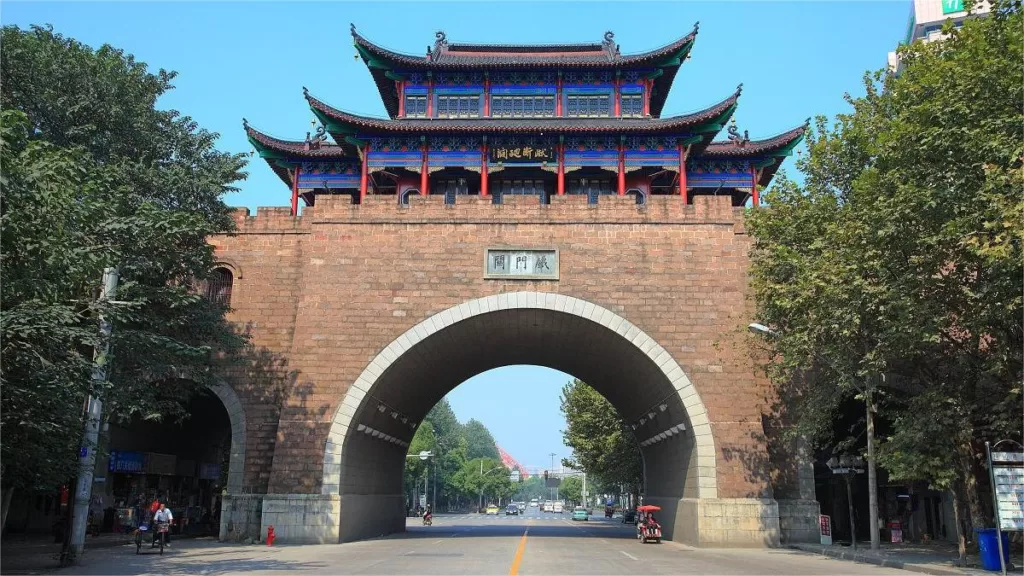Iron Gate Pass Wuhan – Ticket, Opening Hours, Location, and History


The Iron Gate Pass (铁门关, Tiemenguan), located in the Qingchuan Pavilion Scenic Area of Hanyang District in Wuhan, has a rich history dating back to the Three Kingdoms period in ancient China over 2000 years ago. The historical records mention that during the Wu and Wei conflict in that era, a strategic pass was established at this location. Over several centuries from the Three Kingdoms period to the early Tang Dynasty, the Iron Gate Pass played a pivotal role as a significant military fortress in the region, witnessing numerous battles and sieges.
Basic Information
| Estimated Length of Tour | 0.5 hour |
| Ticket Price | Ascending the pass costs 10 RMB |
| Opening Hours | 8.00 – 20.00 |
| Telephone Number | 0086-027-84710413 0086-027-84710440 |
Location and Transportation
Iron Pass Gate is located in the Han Yang District of Wuhan City, Hubei Province, China. Situated on Qingchuan Avenue, it is positioned on the eastern foothills of Turtle Mountain. To get there, you can choose the following ways:
Bus: Take bus 30, 531, 532, 535, 553, 559, 561, 711, or 803 and get off at Qingchuan Avenue Qingchuan Pavilion Stop (晴川大道晴川阁站).
Metro: The closest metro station to Qingchuan Pavilion is Qintai (琴台) on line 6. After getting out of the station, you can walk or take bus 504, 10, or 411 to cover the remaining 2 kilometers.
History of Iron Pass Gate
In the fourth year of the Tang Wude era (621 AD), with the construction of Hanyang City, the military significance of the Iron Gate Pass began to diminish. It transitioned into an essential conduit for cultural exchange, economic trade, and commerce. The bustling streets were filled with the hustle and bustle of people, vehicles, and flourishing businesses. By the late Ming Dynasty, the original Iron Gate Pass was destroyed, leaving only its earthen foundations and walls.
In 1864, County Magistrate Zhou Jinzhong made the bold decision to rebuild the Iron Gate Pass. Recognizing the immense potential of the location, he transformed the tower of the Iron Gate Pass into a temple dedicated to Guan Yu, also known as Guan Gong, a revered historical figure. A local scholar named Li Hanz wrote an inscription for the temple, which bore the words “Heaven and Earth’s Righteous Qi (天地正气).” This temple became a unifying symbol for people from all over the country who came here for business. Inside the temple, a statue of Guan Gong stands in a green dragon robe, holding a candle and reading, while a pair of stone lions guards the temple’s entrance.
In 1891, Zhang Zhidong, in order to construct the Hanyang Iron and Steel Plant, dismantled the Iron Gate Pass. This nearly two-thousand-year-old city wall was filled in the East Moon Lake, and the Iron Gate Pass vanished from the landscape.
The Iron Gate Pass was successfully reconstructed in December 1990. Today, it covers an area of 800 square meters and stands at a height of 26 meters. Its walls are constructed using red sandstone, with a reinforced concrete structure inside. The city tower on top of the pass features ornate eaves and winged corners, and inside, you can find a series of statues and stories depicting characters from the novel “Romance of the Three Kingdoms.” These elements blend seamlessly with the rich ethnic architectural style. From the Iron Gate Pass, you can enjoy panoramic views of the vast Yangtze River, the tranquil East Moon Lake, and the picturesque Han River as it flows past Xieyue City.
The Iron Gate Pass stands as a testament to the enduring historical significance of the region, reflecting the transformations it has undergone over the centuries, from a strategic military stronghold to a thriving center of culture, trade, and heritage. Today, it is a place where visitors can connect with the past and appreciate the beauty of the landscape that surrounds it.
Vlog about Iron Gate Pass
Attractions near Iron Gate Pass

Guiyuan Temple – Two-faced Guanyin statue

Wuhan Qintai Grand Theater – A cultural hub

Wuhan Zoo – Rich flora and fauna

Zhang Zhidong And Modern Industiral Museum

Dayu Mythological Park – Stories and Lengends surrounding Dayu

Qingchuan Bridge – Rainbow bridge

Guishan Park – the geographical heart of Wuhan

Hanzheng Street – Affordable small commodities

Wuhan Chinese Strange Stone Museum – A testament to the Earth’s geological wonders

Guqin Terrace – Lengend of Boya and Ziqi
Hubei Historical Sites, Wuhan Attractions